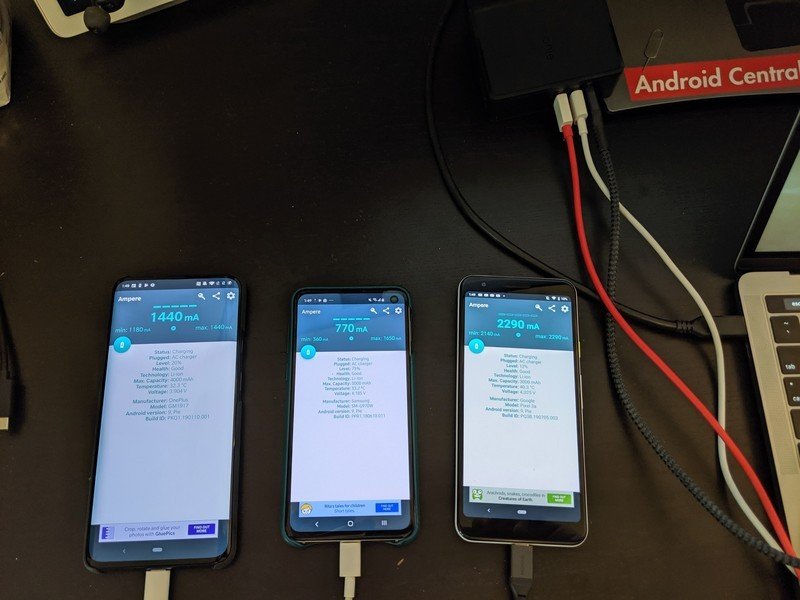It's rare that I get excited about a charging product — does anyone, really? — but Mophie's Powerstation Hub is one of those products that neatly solves a bunch of the issues I face when deciding which accessories to bring with me on a trip, short or extended.
It does this by giving me options, and by doing it all in a compact, powerful, and seriously convenient package — all for $100. It's not for everyone, and there are definitely some ways the product could be improved, but this is definitely one of Mophie's most inspired designs in recent memory, so let's dive in.
Pros
- Supports 18W USB-C PD charging
- Has two USB-A ports
- Supports wireless charging
- Built-in AC plug for recharging
- Useful 6100mAh integrated battery
Cons
- Expensive
- Only supports wireless charging in one orientation
- Total output limited to 23W
- Doesn't ship with travel adapters
Mophie Powerstation Hub review The peaks and valleys of doing it all
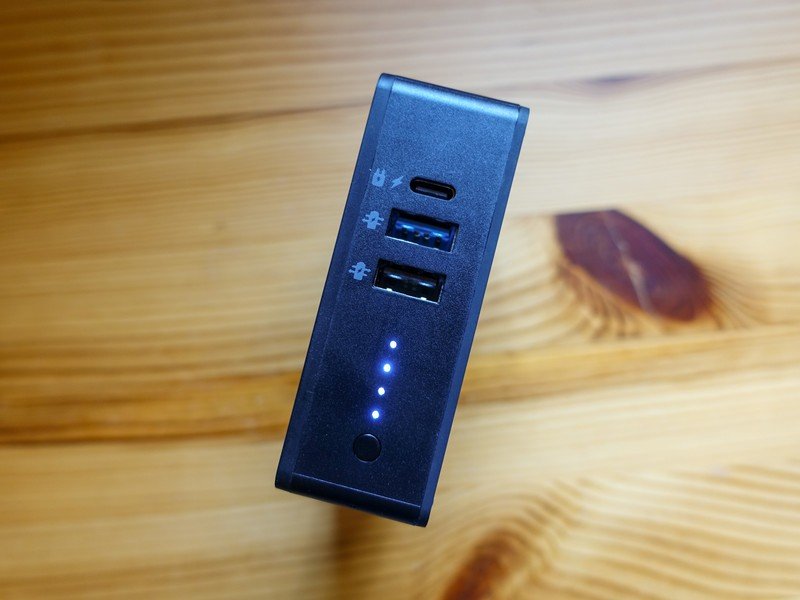
Since being purchased by ZAGG, Mophie has dipped its toe into new product categories, and recently found its footing selling well-made and relatively inexpensive portable battery packs for all kinds of devices. The Powerstation Hub takes everything the company has learned over the years and crams it into one reasonable portable device — the brick is about the same size as Apple's 65W MacBook Pro charger.
You can charge four devices at one in a power brick the size of a MacBook Pro charger. And that's pretty great.
But this doesn't just have one USB-C port; it contains one, yes, but also features two USB-A ports along with a modular replaceable AC adapter (replacement plugs will reportedly be sold separately but I received a bunch of them in the reviewer's box) and, on one side, support for Qi wireless charging.
The best part is that while the Hub is intended to be used as a travel charger, its 6,100mAh battery facilitates portable charging as well. Plugging the thing into a free wall plug charges the connected products first and, once those are sufficiently topped-up, inflates the internal battery again.
Get the latest news from Android Central, your trusted companion in the world of Android
The USB-C port is where the fastest charging happens at 18W, but the top USB-A port can also do 15 watts via the QuickCharge standard. The bottom one can also do 15W with anything that supports 5V/3A (mainly older tablets). The wireless charging coil is limited to 5W, which is relatively slow but is still good enough to slowly charge a phone as you're sitting for a coffee.
A quick explainer of what all this watt stuff means
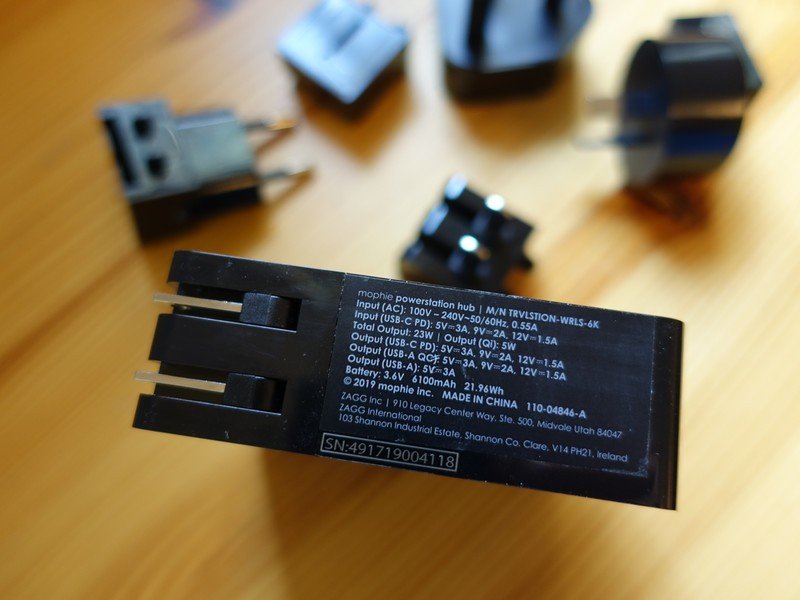
Don't speak geek and want a translation of all that wattage lingo? At its most basic level, we're talking about charging speeds. The higher the wattage, the faster a phone's battery charges. The Powerstation Hub supports a maximum of 18W output from its USB-C port, and it uses the USD-PD, or Power Delivery, standard. Most phones that charge via USB-C support USB-PD since it's the generally accepted charging standard built into the USB-C spec itself; while it can technically support speeds of 100W, in order to preserve the health of the phone's battery, and to prevent the power brick in the box from being the size of a Buick, most phone makers try to find a balance in maximum charging speed. And 18W is a good compromise since it usually charges a phone in about 1.5 to two hours depending on the size of the battery cell.
Wattage is determined by amps x voltage; some charging methods try to ramp up the voltage while others try to kick up the amperage, or current. Both have their downsides; increased voltage puts a strain on the battery and generates heat in the phone, while higher amperage requires a larger and more heat-sensitive power brick. Many companies have their own solutions for increasing charging speed while trying to prevent dangerous overheating: Qualcomm's Quick Charge standard uses a ladder technique which moderates the voltage up or down the closer the battery is to fully charged.
At the end of the day, when it comes to charging speeds, companies have to find a compromise between battery safety and charging speeds, and while solutions like Huawei's SuperCharge and OnePlus's Warp Charge are pushing the boundaries of what's possible today, they're limited to adapters and cables from the manufacturer. USB-PD and Qualcomm QuickCharge may not be quite as fast but as standards, they're much more ubiquitous, and that's likely why Mophie put them in the Powerstation Hub.
But there's a downside to all of this convenience: while each port is individually capable of fairly fast charging speeds for phones and other smaller devices, the total output is limited to 23W, and that includes the five watts from the wireless charging coil. That leaves 18W to split between the remaining three USB ports. I did a bunch of testing using the Ampere app with one, two, or three products attached to the unit and found the following:
- A single phone that supports USB-PD attached to the USB-C port pulls between 12–15W (which is in line with the claimed 18W maximum, minus overhead).
- For example, a Pixel 3 attached to the USB-C port will pull 10W while a Galaxy S10 will pull 6-8W from the USB-A port.
- When all three USB ports are in use, the USB-C port will maintain 10 watts of charging while the other two will fluctuate based on need.

All of this is separate to the Qi wireless charging, which reserves 5W at all times (for the aforementioned maximum of 23W total).
What does this mean for actual charging? Well, in this case, convenience trumps speed; a single Pixel 3 will ostensibly charge at its maximum wired speeds of 18W (though I only saw 15W for a few seconds before it stabilized at 12W) but when there are two or three products charging, you're going to drop to, say 10W + 5W + 3W. If all three of those products are phones, say on a family vacation, you're going to want to make sure you give enough time for those slower gadgets to top up or bring a separate fast charger just in case.
Given the overall power limitations, this isn't the right charging brick to keep your laptop going, either: most laptops require more than 30W of power, and some 40 or 50, so you're going to want to invest in a decent dedicated high-powered USB-C charger for those.
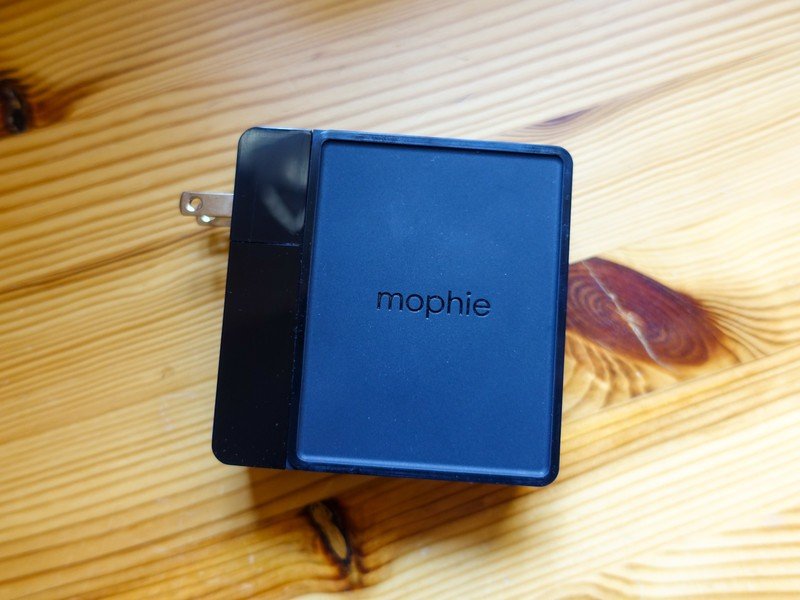
Those limitations out of the way, I quickly grew to love the Powerstation Hub for its convenience. Its integrated 6,100mAh battery makes its incredibly useful when a nearby plug isn't handy, especially since I can pull it out of my bag, place it sideways, and use the integrated Qi wireless charger.
It proved a perfect bedside charger, too, while on vacation: I had the choice of running a USB-C cable from the Hub to charge my phone or using a separate USB-C brick and a cable to the Hub to use as a bedside wireless charger. The internal battery provides enough juice for at least one full phone recharge, if not a bit more, making it even more useful for traveling.
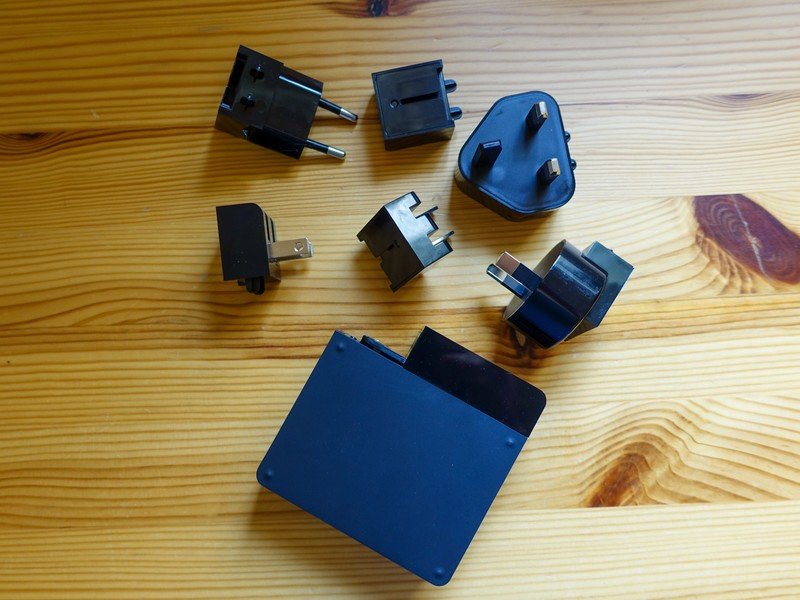
While my kit included adapters for practically all the different plug types used around the world, Mophie says it will only ship the home country's version in the box (so US models will ship with a folded two-prong adapter while Europeans will get the less compact rounded plugs along with a "blanking" adapter that lets the Hub sit flat on a table) and will sell the others separately in a package later on. That's pretty disappointing because it would make the $100 asking price considerably more palatable.
Mophie Powerstation Hub Should you buy it?

There's a lot to like about Mophie's versatile and genuinely useful Powerstation Hub. It lets you charge four devices at once — phone, smartwatch, camera, headphones, etc. — and has a built-in battery for times when a power outlet just isn't available.
4 out of 5
Speed isn't the name of the game here: Mophie would have had to make the Powerstation Hub much bigger and heavier if it intended to include all the components it currently does and allow it to charge a laptop, too. I'm OK with that compromise, especially while traveling, since this allows me to leave behind a separate battery pack and at least two smaller AC adapters. When charging one gadget at a time, the 18W USB-C port and 15W USB-A ports provide plenty of juice for fast charging, and the separate Qi charger is there if you need it in a pinch.
I just wish Mophie included the travel adapters in the box, especially since, at $100, there are many cheaper, if slightly less feature-rich, charging options out there.

Daniel Bader was a former Android Central Editor-in-Chief and Executive Editor for iMore and Windows Central.

